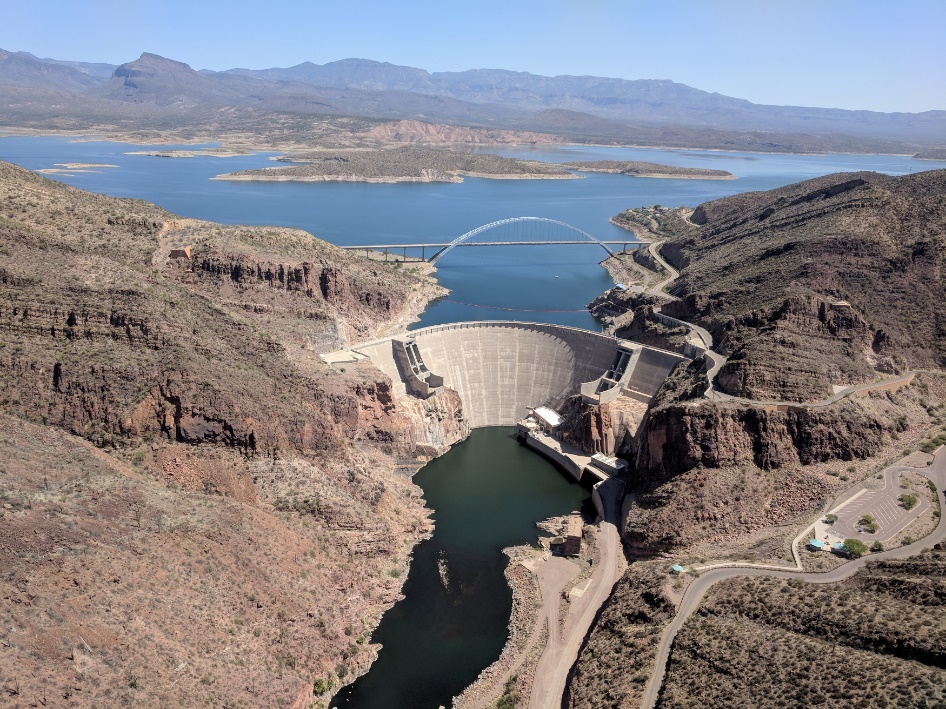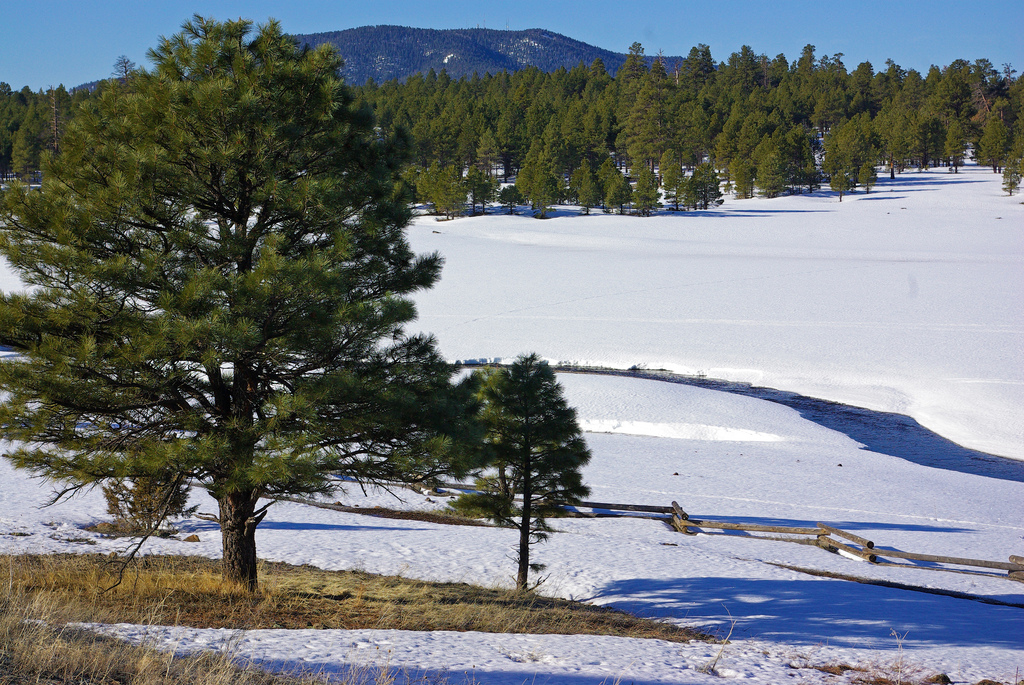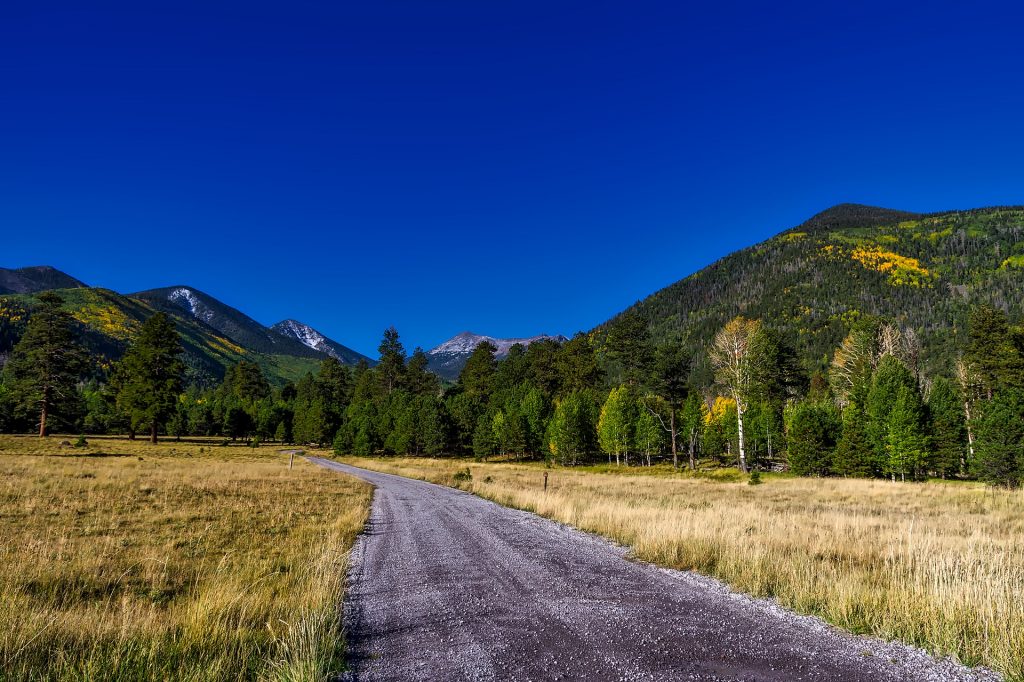This past winter turned out to be one of the driest on record within the Salt and Verde River watersheds. Dry weather with only 3.13” of precipitation (27 percent of normal) going back to October of last year resulted in a new record low streamflow in the Salt and Verde Rivers. Between January and May, only approximately 100,000 acre-feet of water (20 percent of normal) flowed into SRP reservoirs that supply much of the Phoenix metro area. Dry conditions this past winter not only reduced the amount of water stored in the reservoirs but created a greater risk for wildfires in the forest areas that impact our water supply.
Managing our Water Supply for Drought
SRP has been bringing water to the Valley for more than 100 years. “SRP was formed as a result of severe drought. We always plan for drought. That way all our surprises are welcome wet years” said Charlie Ester, Manager, Surface Water Resources. SRP conjunctively manages surface water reservoir supplies and groundwater pumping operations to ensure carry-over water conservation storage during times of drought. Due to low inflows into the reservoirs this winter, SRP’s water resources team is pulling from 2017 water reserves and using a modest increase in groundwater pumping to meet customer needs. Should we experience a severe drought next winter, pumped groundwater would provide further water “insurance” along with water from our seven reservoirs.
Despite the dry winter in 2018, SRP reservoirs currently remain at 55 percent of capacity thanks to a wetter than normal winter in early 2017. Roosevelt Lake (SRP’s largest reservoir) along the Salt River is currently at 51 percent full and will help to meet water supply needs this year. “Our two Verde reservoirs can hold less than a year’s annual flow while the Salt reservoirs can hold three years’ normal flow. That really creates this balancing act that we do every year in moving the water supply from the Salt River to the Verde and back to the Salt. We need to balance the storage and reduce the chance of spilling water as much as possible. Ironically, in the height of the current drought, we still think about minimizing spill, but that is how you maximize your water supply” said Ester.

Want to learn more about the SRP watershed and our daily water levels? Visit www.watershedconnection.com.
Learn more about drought in Arizona at www.droughtfacts.com
Protecting Watersheds from Catastrophic Wildfire
Dry conditions this winter have also led to extremely dry vegetation throughout the watershed that provides potential fuel for wildfires. All vegetation types from lower elevation grasslands to mountain pine forests show significant fire potential risk. Forest restrictions and closures have already been initiated by the Forest Service to reduce the risk of fire during the most challenging portion of Arizona’s 2018 wildfire season. Dry, windy, and warm conditions during the spring and early summer before monsoon rains arrive can easily spark fires and pose a high risk for the possibility of catastrophic fires in the high mountain forests, much of which make up the Salt and Verde watersheds.
Forests in northern Arizona are the lifeblood of SRP’s water supply as runoff from rain and snow that falls on the forest flows downstream along the Salt and Verde rivers. Healthy forests protect the ecosystems and hydrology of the watershed ensuring cleaner and more sustainable water flowing into the reservoirs. SRP continues to work with partners on forest restoration activities, such as thinning overgrown forests, in order to reduce the risk of catastrophic wildfires and protect the forests that supply water to the Valley. It is important to be extra-cautious and observe fire prevention tips when enjoying the outdoors in Arizona.

To learn more about healthy forests and importance to a sustainable water supply, visit www.srpnet.com/forests.
You Can Help Protect Arizona’s Forests
At first glance, the scope of the issues plaguing Arizona’s forests can appear overwhelming. But there are steps that you can take to help improve the situation.
- Donate to SRP Trees for ChangeTM and funds will be used to plant trees in an area in northern Arizona destroyed by fire.
- Practice care outdoors by knowing how to properly extinguish a campfire and adhering to all forest restrictions and closures.
- Volunteer with organizations that are committed to the health of the forests.
Details can be found at www.srpnet.com/foresthelp
Salt River Project (SRP) is one of 20 Water – Use It Wisely partners to offer water-saving advice and programs. It is also one of the largest raw-water suppliers in Arizona, delivering about 800,000 acre-feet of water annually to a 375-square-mile service area and managing a 13,000-square-mile watershed that includes an extensive system of reservoirs, wells, canals and irrigation laterals.


